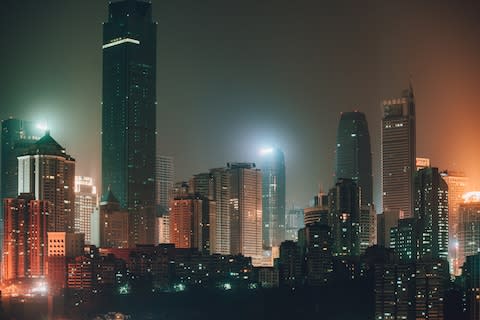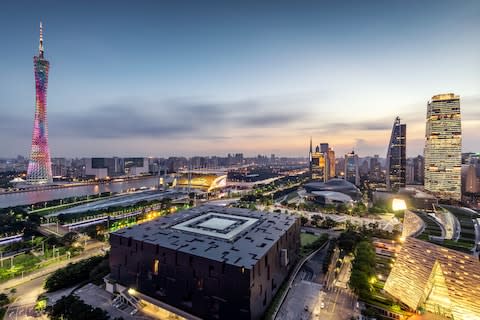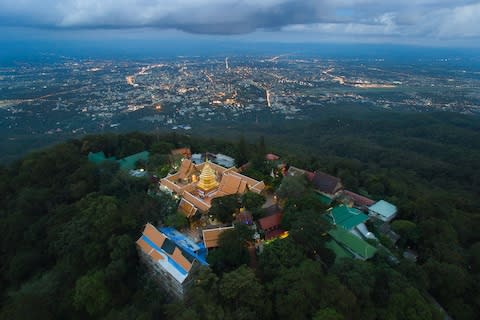Revealed: The 10 fastest growing cities for tourism – have you been to any of them?

The world’s top 10 fastest growing cities, in terms of tourism, are all in Asia - and the top five in China, new research has shown.
But they’re not likely to be destinations thronging with British holidaymakers.
Like Chongqing. The city in south-west China is poised to grow its travel industry by 14 per cent in the next 10 years, according to a report by the World Travel and Tourism Council (WTTC), which considered the likely future contribution to GDP by tourism sector of 65 cities, including 21 in the Asia and Pacific region.
Or Guanghzhou, once a major terminus on the Silk Road, which is expected to expand 13.1 per cent by 2026.
Not familiar with these? But surely you’ve been to Shenzhen, which boasts the eighth largest growth rate in the world (10.7 per cent)?
Which of the top 10 have you been to?
Chongqing - 14 per cent rise in contribution to GDP
Guangzhou - 13.1 per cent
Shanghai - 12.8 per cent
Beijing - 12 per cent
Chengdu - 11.2 per cent
Manila - 10.9 per cent
Delhi - 10.8 per cent
Shenzhen - 10.7 per cent
Kuala Lumpur - 10.1 per cent
Jakarta - 10 per cent
“The dominance of the Chinese market is clear, both in terms of future growth and overall size,” said the WTTC in its report.
Of course, it is no surprise that countries looking to boost their visitor numbers should appeal to the Chinese, the world’s largest holiday market, but one that remains largely untapped. As it stands, only 8.7 per cent of its population own a passport, a ratio set to soar in the coming years.
This lack of travel documents partly explains the big growth expected for Chinese destinations.
unbelievable tourism stats
Fancy a trip to Chongqing?
But why might you want to spend a long weekend in Chongqing? Our family editor Sally Peck, who lived in China for two years and returns frequently, explains.
“Greater Chongqing, population 30 million, is a major manufacturing centre and transportation hub,” she says. “One of China’s most polluted cities, it occupies a strategic position along the Yangtze, serving as the start of most Three Gorges cruises, and also as the port for many cargo ships, which have easier access thanks to the grand Dam down river at Yichang.
“While hot pot probably originated in northern China, its greatest iteration comes from Chongqing: you cook raw vegetables and meat in a bowl of fiery chilli-laden soup and it is delicious.”

What about Guangzhou?
“If it’s top-notch dim sum you’re after, Guangzhou, aka Canton, is the place to be, a teeming, humid monument to the best and worst of contemporary China,” she says.
Shenzhen, a city that registers a higher growth rate than Kuala Lumpur, is “a study in the haves and have-nots of the People’s Republic”, she adds.
“Luxury high-rises for business people loom over shanty towns housing the millions of workers who produce everything from trainers to toys for international consumption,” she says.

I think I'd rather go to Manila...
Our cruise editor Teresa Machan had some tips, too, for Manila, the Philippine capital and fastest growing destination outside of China.
“According to the 2017 Travel and Tourism Competitiveness Report of the World Economic Forum the Philippines is the 11th most dangerous country for tourists. I've never met an unfriendly host in that country, which makes the trigger-happy tendencies of the capital's criminal gangs and kidnap-for-ransom occurrences all the more sad,” she said.
“Do visit the Philippines' sprawling and stunning archipelago of islands (avoiding the southern half of Mindanao) for some of the region's best snorkelling and powder-soft beaches; but don't linger in traffic-clogged Manila longer than you need to. While the Spanish heritage most evident in the restored walled city of Intramuros offers a point of difference compared with most of the must-see temples and heritage sites found in much of Southeast Asia.”

What else did we learn from the WTTC report?
Singapore is soaring
Singapore’s travel industry has doubled in 10 years, now turning over $12.4billion (£9.4billion) every year. The vibrant city state boasts a diverse culinary scene, from fine dining to sizzling street stalls, as well as lush botanical gardens. Once regarded as a pleasant stopover, the city is increasingly being recognised as a destination in its own right. Some 450,000 Britons visit every year, according to the Foreign Office.
Macau is the “most tourism intensive city” in the Asia Pacific region, with more than a quarter of its economy the direct result of tourism spending. The gambling hub is the sixth most visited city in the world, ahead of the likes of New York, Istanbul and Dubai. By 2026, its contribution to GDP will grow by 10.9 per cent.

Thai tourism is growing outside of Bangkok
Though the capital enjoyed a healthy growth rate (8.4 per cent), the WTTC noted that its share of national tourism had fallen from 60 per cent in 2006 to 50 per cent in 2016.
“Other destinations within the country have grown rapidly,” the report said. “For many years Bangkok was the key gateway for Thailand as the location of the country’s main hub airport.
“Increased connectivity elsewhere in the country more recently has prompted faster growth than in Bangkok.”
Location such as Phuket, in the south and famed for its beaches, and Chiang Mai, in the mountainous north, are increasingly popular with visitors.

Osaka has the slowest growth rate in the region
Behind every other city in the Asia Pacific region, Osaka has to resign itself to an anticipated growth of just 1.2 per cent over the next 10 years. The WTTC puts this slow rate down to the city still recovering from the Japanese earthquake of 2011.